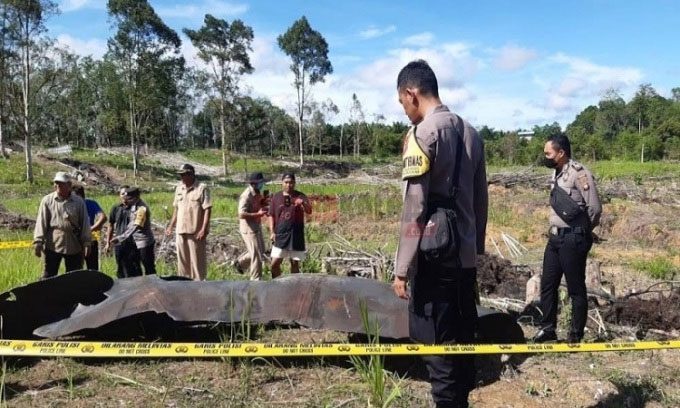Some debris from the Long March 5B rocket that fell to Earth last weekend has been discovered on Borneo Island.

Indonesian police inspect a piece of rocket core debris in Pengadang village, West Kalimantan. (Photo: Borneo Post)
The 22.5-ton core stage of the Long March 5B rocket fell uncontrollably to Earth on July 20, streaking through the atmosphere over the Indian Ocean, according to Space. Most of this component burned up during its descent; however, it is estimated that some debris accounted for about 20-40% of the rocket’s weight that remained after re-entry.
Some residents discovered pieces of the Long March 5B rocket scattered across various locations along the core stage’s flight path, with some large enough to cause serious damage or injury if they hit a city or village. “Large debris fell in Kalimantan, Indonesia, and Sarawak, Malaysia (both located on Borneo Island). There have been no reports of injuries or property damage,” said satellite tracking expert Jonathan McDowell from the Harvard-Smithsonian Center for Astrophysics.
The Long March 5B rocket was launched on July 24, delivering the Wentian module to China’s Tiangong space station. The rocket’s core stage reached orbit along with the module before being pulled back to Earth by atmospheric drag six days later. Typically, large core stages are maneuvered to safely self-destruct over oceans or uninhabited areas shortly after launch.
The method of disposing of the core stage in the case of the Long March 5B rocket has been controversial due to the risk of injury or damage after each launch. The Chinese space agency has faced criticism for allowing the Long March 5B rocket’s core stage to become a significant piece of space debris in all three missions conducted so far.
The first Long March 5B mission in May 2020 ended with debris falling in Côte d’Ivoire in West Africa. In the second mission in April 2021, rocket debris also fell into the Indian Ocean.





















































